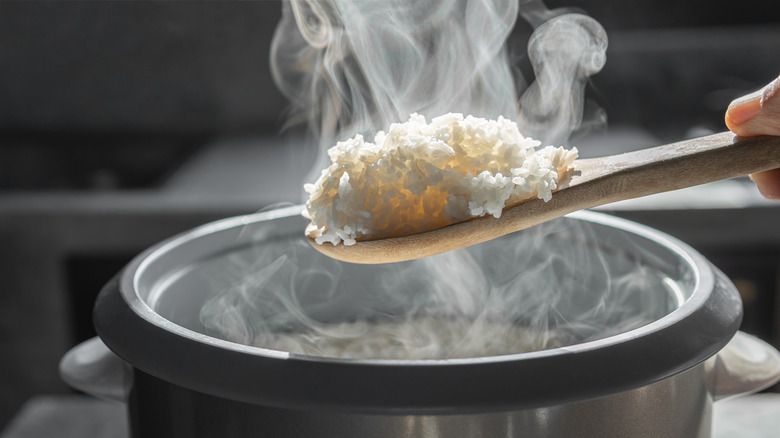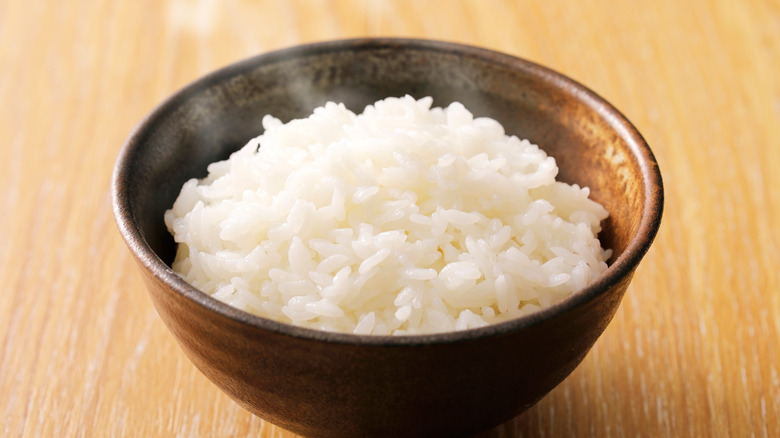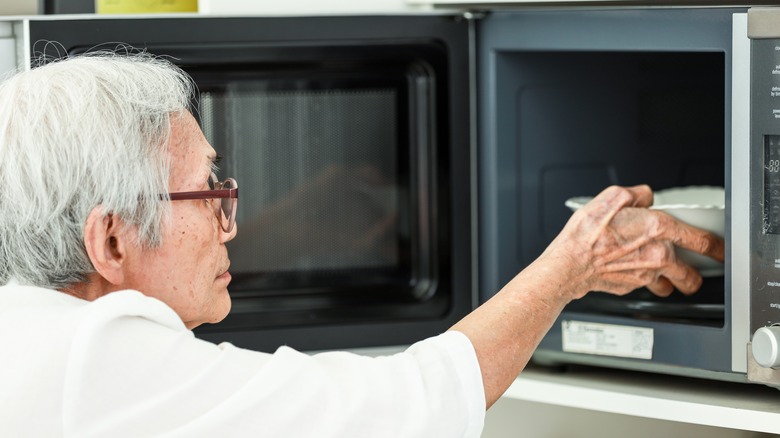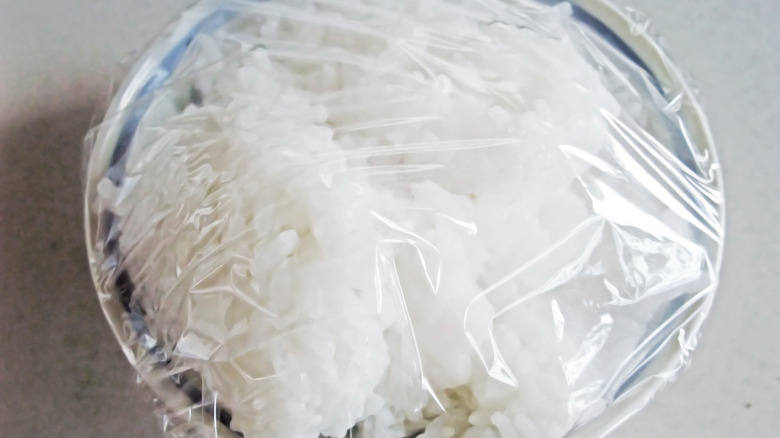How Long Can You Store Cooked Rice In The Fridge?
It's leftover night, and you find yourself eyeing a bowl of rice that's been sitting in the fridge for a few days. At first glance, it looks okay — but how long do you have before leftover rice becomes dangerous to eat?
Per FoodSafety.gov, leftover rice can be stored in the refrigerator and safely eaten four to six days after being cooked, as well as up to six months in the freezer. (That's right, you can freeze your cooked rice.) The rules apply to both brown and white rice — Healthline notes that all rice has roughly the same shelf life once cooked.
However, the United Kingdom's National Health Service errs on the side of caution and suggests that rice should be consumed within 24 hours. Why such a conservative estimate? The NHS blames the bacteria Bacillus cereus. One of the most common causes of food poisoning worldwide, B. cereus grows in room-temperature rice and other starchy foods. Symptoms of food poisoning include diarrhea and vomiting, though they typically go away on their own within 24 hours.
While rice might not be the best choice for make-ahead meal prep, you don't necessarily have to toss your leftovers immediately. By storing your leftover rice correctly and monitoring it for signs that it's gone bad, you can mitigate the risk.
How to store cooked rice
To help prevent food poisoning, first cool your cooked rice as quickly as possible, according to Bon Appétit. That way, the rice spends less time in the danger zone. The Centers for Disease Control and Prevention (CDC) says that the "danger zone" refers to temperatures between 40 and 140 degrees Fahrenheit, the sweet spot where bacteria tend to multiply quickly. The longer food sits in the danger zone, the more likely bacterial contamination becomes. That means you shouldn't leave rice sitting on the stove, or even in your rice cooker, for too long. That handy "keep warm" setting might not be hot enough to prevent bacterial spread.
Don't try to rush the cooling process by putting hot rice in the fridge, though. Hot food can raise the temperature of the refrigerator, putting everything in the danger zone. If you're in a hurry and need to cool cooked rice quickly, try spreading it out on a large tray. This maximizes the surface area, cooling the rice by exposing it to as much room-temperature air as possible. Once it's fully cooled, transfer the rice to airtight containers and refrigerate. Make sure that the container is tightly sealed to keep odors and bacteria out and moisture in — a cardboard or styrofoam takeout container won't do.
Don't reheat rice more than once
While it's always a good idea to avoid reheating leftovers more than once, it's particularly important when it comes to rice. Each time you reheat rice, you're bringing it back through the danger zone — and giving bacteria more chances to develop. B. cereus is an incredibly heat-resistant bacteria, and once it develops, it can survive at high temperatures. That doesn't mean you shouldn't reheat leftovers all the way through, though: Make sure that they reach temperatures of 165 degrees Fahrenheit or above, well outside of the danger zone. You can reheat rice in the oven, microwave, or stovetop with a few tablespoons of water to make sure that it doesn't dry out.
If you find yourself with more leftover rice than you can eat in one sitting, portion out a small serving to reheat rather than reheating the whole batch. That way, you may be able to get another meal out of the leftovers — you can always go back for more if you want seconds.
Signs that rice has gone bad
Even if rice has been sitting around for less than the recommended four to six days, you should still throw it away immediately if something seems off.
While it's pretty easy to guess that visible mold or creepy-crawly bugs mean that rice has gone bad, not all signs are so obvious. After you've given it a visual once-over, Healthline recommends smelling it: Fresh, unspoiled rice doesn't have much of a smell, so an odd odor is a sure sign that something is off. Throw it away if you notice a change in texture, too. According to Better Homes and Gardens, a slimy texture is one of the first signs of bacterial contamination. Hard or dry rice may simply have dried out in the storage process, but it's best to play it safe and toss it, too — even if it's not contaminated with bacteria, it probably won't taste very good.



